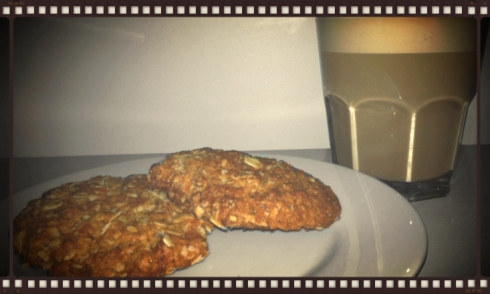
Strange Fruit, by Turtle Donna Sarten at the Academy of Fine Arts, Wellington.
It was ANZAC Day last Wednesday (25th April). Outside of Australia and New Zealand (and increasingly the UK, for reasons I’ll explain later), not many people have heard of ANZAC Day. Fewer still understand what is all about.
Here in the Antipodes, ANZAC Day is possibly the most significant NATIONAL holiday we have. National in the sense of being specific to our country – rather than a reflection of our wider cultural adherence to broadly Christian festivals like Christmas and Easter.
I know that the Australians also have Australia Day and we New Zealanders have Waitangi Day; both of which commemorate events that represent the beginnings of the formalisation of European dominance over the indigenous peoples of the two countries. But increasingly ANZAC Day has come – for many on both sides of the Tasman – to better represent each country’s sense of nationhood.
I’m going to quote Wikipedia here, because it’s a pretty succinct account of what ANZAC Day is:
Anzac Day is a national day of remembrance in Australia and New Zealand that broadly commemorates all Australians and New Zealanders “who served and died in all wars, conflicts, and peacekeeping operations” and “the contribution and suffering of all those who have served.”[1][2]
The date is the day, in 1915, when Australian and New Zealand troops landed, as part of the Allied Expeditionary Force, on the Gallipoli Peninsula in what is now Turkey, in an attempt to capture it from the troops of the Ottoman Empire, which was allied with Germany in World War I.
Gallipoli was a monumental military cock-up. Instead of the envisaged swift, decisive Allied victory, fighting continued for eight months before those Allied troops left alive were evacuated. Forty four thousand (44,000) Allied troops died at Gallipoli (from the British Empire and France); eighty seven thousand (87,000) Turkish troops also lost their lives. For two relatively under-populated countries in the Pacific, the 8,500 Australians and 2,721 New Zealanders who died represented an enormous loss (remember too, that thousands more were fighting and dying in muddy battlefields in France also).
ANZAC Day then, has come to symbolise a moment in time when two of Britain’s newer colonies felt themselves emerge as distinct nations – shaped and scarred by terrible suffering.
When I was a child, ANZAC Day was a public holiday, but most people I knew regarded it as little more than a welcome day off work. Those who attended the dawn parades seemed to mainly be returned servicemen and women, their families and those in the military.
Ironically, the further we have travelled from the actual Gallipoli landing, the more people feel the need to remember. There are no WWI veterans left to take part in the parades and services; and dwindling numbers of WWII veterans. Now it is their descendants who rise before dawn, pin the medals of grandfathers and great grandfathers onto their own or their children’s chests and go out in the cold to take part in increasingly well-attended commemorations that are held all around the country. That includes the small city-fringe community I live in, where the gates of the local park serve as a war memorial, naming the dozen or so farm boys who left very rural Greenhithe to go to war but did not return.
ANZAC commemorations have traditionally also taken place at ANZAC Cove itself, and increasingly in the UK as young Kiwis and Aussies on their OE (overseas experience) join with other ex-pats to remember not only the sacrifice of their forefathers, but affirm their own cultural identity.
2015 will be the centenary of Gallipoli. Already it’s been announced that there will be a ballot for places at the ceremony at Anzac Cove, such is the interest amongst Antipodeans young and old. In Auckland where I live, the mayor has announced a programme of remembrance, which includes funding for memorials, museum exhibitions and events. New Zealand – and likely Australia too – are preparing themselves for a momentous occasion.
While interest and participation in ANZAC Day has grown, there has always been discomfort with the notion of defining nationhood in terms of military sacrifice. Amongst other things, it highlights the way different conflicts have been perceived – something that’s central to the beautiful and moving installation, Strange Fruit, by Turtle Donna Sarten, currently at the Academy of Fine Arts in Wellington.
I’ve written about this installation in another blog, so won’t repeat myself here except to say that Strange Fruit consists of 3890 military dog tags; each of which has been hand-inscribed with the name of one of the New Zealanders who served in Vietnam during the period 1964-72.
Unlike in earlier conflicts, Vietnam veterans did not return home to parades celebrating their sacrifice. They experienced the embarrassment, silence and sometimes hostility of a public which had comprehensively turned against the war. In New Zealand, veterans have lobbied tirelessly for recognition not only of their service, but even more importantly, of the physical and psychological damage they suffered – including exposure to the defoliant Agent Orange and PTSD.

Detail: Strange Fruit by Turtle Donna Sarten.
In the stillness of a stark white gallery, Donna Sarten has invited visitors to contemplate war and sacrifice and remembrance, through the lens of a recent conflict that in many ways divided this country as much as World War One united it, and perhaps re-defined our sense of nationhood as much as Gallipoli originally formed it.






